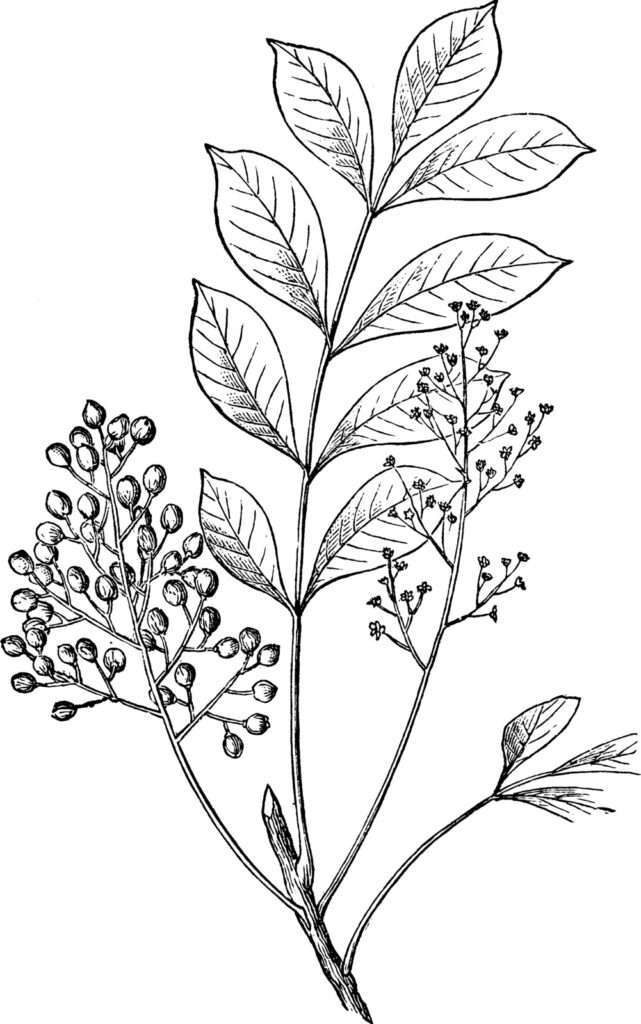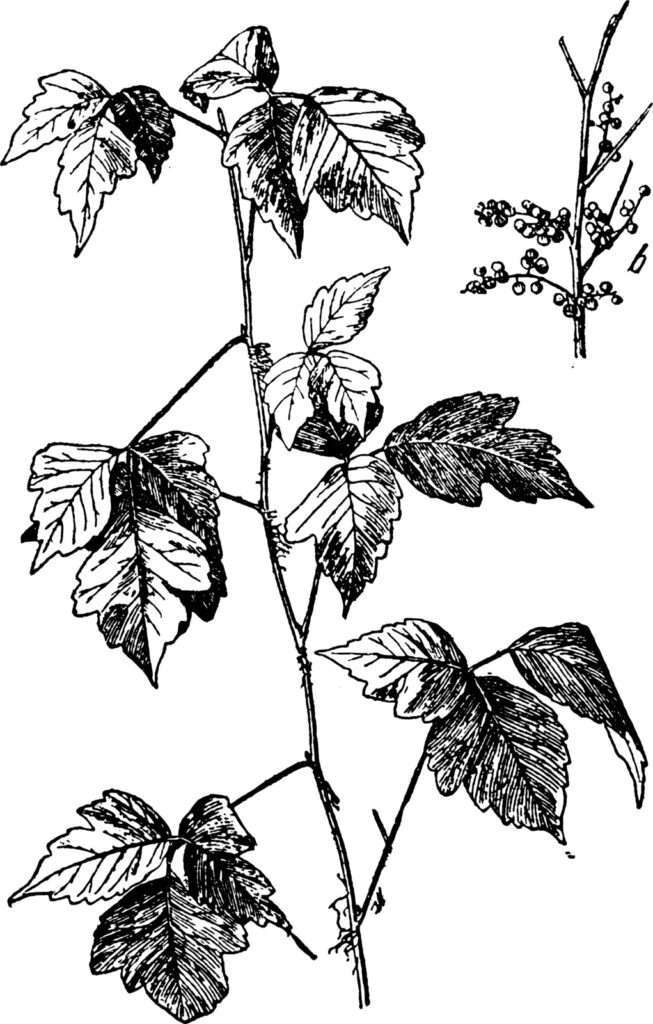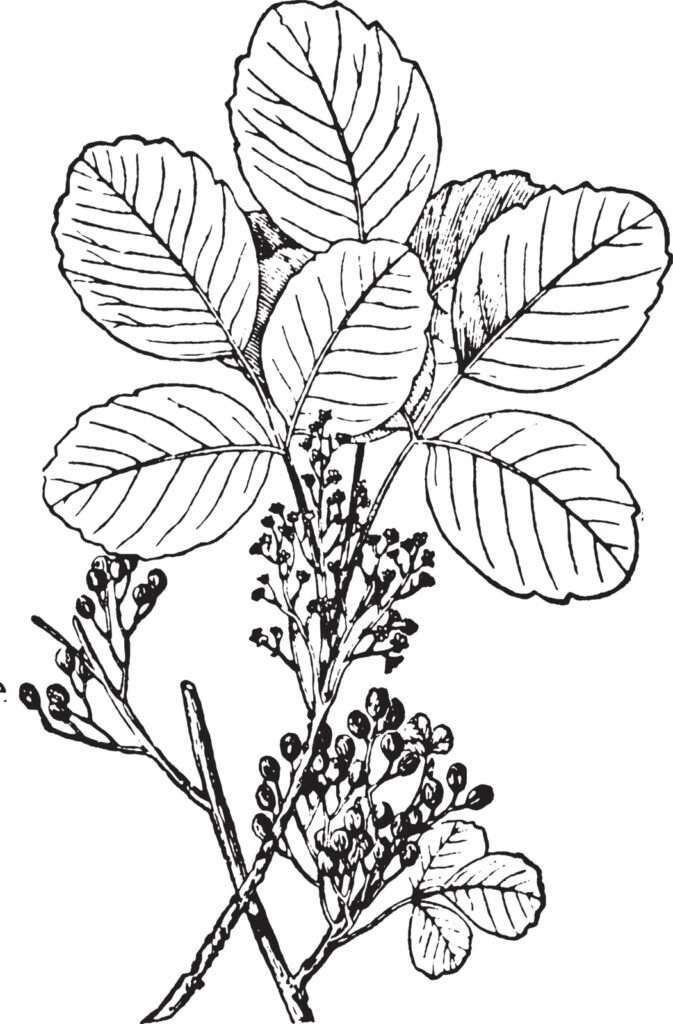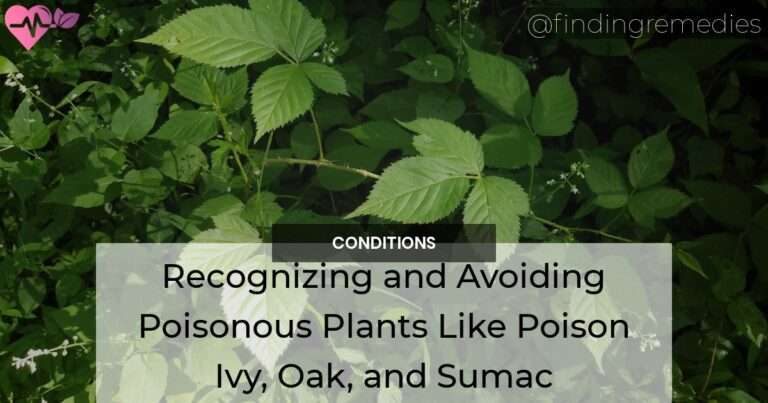Have you ever gone for a walk in the woods, only to return home with an itchy rash? This could have been caused by the notorious trio of plants known as poison ivy, oak, and sumac.
This article is to help everyone stay safe and avoid painful rashes by learning how to become an expert in recognizing and avoiding poisonous plants like Poison Ivy, Poison Oak, and Poison Sumac.
These three plants contain an oil called Urushiol which causes an allergic reaction upon contact with human skin. Unfortunately, many people don’t recognize these plants in time or wrongly assume that they are harmless.
Without further ado – let’s get started on learning how to identify, avoid and treat these very common “deadly trio” members!
Table of Contents
What Are Poison Ivy, Poison Oak, and Poison Sumac?
Poison ivy, poison oak, and poison sumac are three types of toxic plants that commonly cause allergic skin reactions. Poison ivy can grow as a shrub or vine and typically stands up to three feet tall. It typically has three leaves coming off one stem, which are usually a light greenish-yellow in the spring and summer but turn red in the fall. Poison oak also grows as a shrub or vine and typically has clusters of three leaves. It is most commonly found in the western United States and is reddish-brown in color. Poison sumac is a woody shrub native to wet areas of North America and can reach up to 20 feet tall with large clusters of 7-13 leaflets.
Allergic contact dermatitis is caused when someone comes into direct contact with any of these poisonous plants, either through touching them directly or indirectly by coming into contact with their oils. Symptoms usually appear within 12-48 hours after exposure and include an itchy rash, redness, swelling, and blisters. To reduce symptoms, cool water wet compresses or aluminum acetate (Burrow’s solution) may be applied for 20 minutes at a time several times each day. Severe reactions may require prescription medications from your doctor.



Symptoms of Exposure
Exposure to poison ivy, poison oak, and poison sumac can result in an allergic reaction known as contact dermatitis.
Symptoms usually appear within 12-48 hours after exposure and can include an itchy rash, redness, swelling, and blisters. In cases of severe reactions, hives, fever and difficulty breathing may also be present. These symptoms can range from mild to severe depending on the duration of the exposure and the amount of plant oil that comes into contact with the skin.
To reduce symptoms, cool water wet compresses or aluminum acetate (Burrow’s solution) may be applied for 20 minutes at a time several times each day. Severe reactions may require prescription medications from your doctor.
Skin Rashes
Skin rashes are a common symptom resulting from contact with poison ivy, poison oak, and poison sumac. These plants contain an oil called urushiol that can cause an allergic skin reaction in susceptible individuals. Upon contact with the plant, urushiol oil may be absorbed through the skin causing an itchy rash, redness, swelling, and blisters.
In severe cases, hives, fever, and difficulty breathing may also occur. Treatment for mild to moderate rashes may involve topical creams or cool compresses to reduce itching and inflammation. Severe reactions may require oral steroids or other medications prescribed by a doctor. It is important to avoid further contact with these plants as well as thoroughly wash clothing or any other items that have come into contact with them.
Severe Reaction
Severe allergic reactions to poison ivy, poison oak, or poison sumac can be serious and require medical attention. These plants contain a plant oil called urushiol that can cause allergic contact dermatitis when exposed to the skin.
A severe reaction may include symptoms such as hives, fever, difficulty breathing, severe itching, and swelling of the skin. Blisters may form and spread on any area of the body that has come in contact with the plant. If you have been exposed to one of these plants it is important to seek medical care immediately. Treatment for severe reactions may include oral steroids or other medications prescribed by a doctor such as aluminum acetate topical solution or wet compresses.
It is important to avoid further contact with these plants as well as thoroughly wash clothing or any other items that have come into contact with them.
Allergic Contact Dermatitis
Allergic contact dermatitis is a skin reaction that occurs when the skin comes into contact with an allergen. It can be caused by exposure to poison ivy, poison oak, or poison sumac plants. Symptoms of this allergic reaction include redness, itching, swelling, and blisters on the skin. The rash typically appears within hours after exposure and can last for several weeks.
Treatment may include cool water compresses and topical medications such as corticosteroids. In severe cases, oral steroids or other medications prescribed by a doctor may be needed. To reduce the risk of developing allergic contact dermatitis it is important to avoid contact with these poisonous plants whenever possible and to thoroughly wash clothing or any other items that have come into contact with them.
Treatment for Poison Plant Exposure
The best way to treat poison plant exposure is to avoid contact with the plants altogether. However, if contact does occur, rinse the area of the skin with water as soon as possible and remove any clothing or other items that have come into contact with the plants. To reduce itching and inflammation, cool compresses or aluminum acetate (available over-the-counter) may be applied to the affected areas. Severe reactions may require oral steroids prescribed by a doctor. If blisters form, keep them clean and covered with sterile bandages until healed.
It is important to note that some people are more prone to severe reactions than others. If you experience an intense reaction after coming into contact with poison ivy, poison oak, or poison sumac, seek medical attention immediately. In addition, these plants grow in many areas of North America; eastern poison oak grows as a shrub up to three feet tall while western poison oak is a vine found in woodlands and along streams. Native Americans used many parts of these plants for medicinal purposes but it is important to remember that direct contact can cause an allergic skin reaction in some individuals.
Wet Compresses with Aluminum Acetate or Cool Water
If you have experienced contact with poison ivy, poison oak, or poison sumac and are experiencing an allergic reaction, wet compresses with aluminum acetate or cool water can help reduce itching and inflammation.
Applying wet compresses to the affected area as soon as possible after exposure may help alleviate some of the symptoms. For best results, keep the compress in place for 15 minutes or longer. Applying a solution of aluminum acetate over the affected area may also provide relief. The solution should be applied several times a day until the rash has cleared up completely.
In addition, bathing in cool water may help reduce itching and inflammation caused by contact dermatitis. It is important to avoid scratching the rash as it can further aggravate the skin and cause infection. If blisters form, keep them clean and covered with sterile bandages until healed. Find out more home remedies for poison ivy rash and other poison plant dermatitis.
Avoid Direct Contact with the Plant Oil
It is important to avoid direct contact with the plant oil of poison ivy, poison oak, and poison sumac. All three plants are capable of causing an allergic skin reaction in individuals who come into contact with the plant oil urushiol. Poison ivy typically grows as a vine or shrub and can reach up to 3 feet tall, while western and eastern poison oak grows in shrub form. Poison sumac is native to areas east of the Rocky Mountains and typically grows as a small tree or shrub.
The most common symptom of coming into contact with these poisonous plants is an itchy rash that generally appears within hours after exposure. The severity of the reaction can range from mild itching to severe blisters that may require medical attention. In some cases, if left untreated, allergic contact dermatitis can occur leading to further complications.
Therefore, it is best to avoid coming into contact with any part of these plants as well as any objects such as clothing, tools, or animals that may have come into contact with the plant oil. If you think you may have been exposed to one of these plants, immediately wash your skin with soap and water and apply wet compresses or a solution of aluminum acetate over the affected area several times a day until the rash has cleared up completely.
Prevention of Poison Plant Exposure
Preventing exposure to poison ivy, poison oak, and poison sumac is the best way to avoid an allergic reaction. When outdoors, wear protective clothing such as long pants, long-sleeved shirts, and boots to cover skin that may come into contact with these plants. Pay attention to the type of plant life around you and be aware of areas where these plants are found. If you think you may have been exposed to one of these plants, immediately wash your skin with soap and water and apply wet compresses or a solution of aluminum acetate over the affected area several times a day until the rash has cleared up completely. Additionally, keep pets away from these poisonous plants and make sure they are not allowed to roam freely in areas where these plants can be found. After outdoor activities, check yourself for any signs of exposure by looking for rashes or blisters on your skin. If you see any signs, immediately begin washing your skin with cool water and take steps to prevent further contact with the plant oil. Taking precautions such as wearing protective clothing and checking yourself for signs of exposure are essential in avoiding unwanted reactions caused by poison ivy, poison oak, or poison sumac.
Identify Native Plants in Your Area
Identifying native plants in your area is an important step in staying safe and avoiding allergic reactions from contact with poison ivy, poison oak, and poison sumac. Knowing the local flora can help you identify these plants before coming into contact with them.
In North America, poison ivy typically grows as a vine or shrub up to three feet tall with leaves of three leaflets.
Poison oak may appear as a low-growing bush or tall climbing vine with leaves of three or five leaflets.
Poison sumac is a woody shrub that can grow up to 20 feet tall and has clusters of 7 to 13 leaflets. All of these plants have oil on their leaves, stems, roots, and fruits which can cause an allergic skin reaction if touched directly or indirectly by other items such as clothing or pet fur that have come in contact with the plant. Learning to recognize these plants is the best way to avoid accidental exposure and potential skin rashes.
Wear Protective Clothing when Outdoors
When spending time outdoors, it’s important to wear protective clothing to protect from potential exposure to poison ivy, poison oak, and poison sumac.
These plants can cause an itchy rash if the skin comes into direct contact with the plant oil found on their leaves, stems, roots, and fruits.
To reduce the risk of an allergic reaction, wear long pants, socks, and closed-toe shoes when outdoors. If possible, tuck pant legs into socks to further prevent skin contact with these plants. Gloves are also recommended for activities such as gardening or yard work that requires handling vegetation. When camping or hiking in areas where these plants may be growing, consider carrying a pair of tweezers in case of accidental contact.
Be sure to wash any clothing worn outdoors in hot water with detergent soon after returning home. Taking these precautions can help reduce the risk of developing contact dermatitis due to exposure to these poisonous plants.
In conclusion, it is absolutely essential to recognize and become adept at avoiding poisonous plants like the trio of plants – poison ivy, oak, and sumac. Knowing the signs, places they are most commonly found, and steps that can be taken to properly remove them from the vicinity is key to avoiding any run-ins with these potentially harmful plants. Taking care to research their appearance and location can help you avoid a nasty rash or other skin issues in the future.
What causes an allergic reaction from Poison Plants?
An allergic reaction can be caused by the resin found in plants, which contains an oily substance known as urushiol. This chemical is easily transferable from plants to other objects, including toys, clothing, and animals. In some cases, it can remain active for a period of up to a year or longer. It is important to be aware that the oils from these plants may also be passed on from clothing and pets, and can even be present in smoke produced following the burning of such vegetation.
What to do when exposed to Poison Plants?
When exposed to urushiol, individuals can develop an allergic reaction ranging anywhere from minor skin irritation to difficulty breathing and swelling of the face or throat. If any signs of a severe reaction are noticed after exposure, medical attention should be sought immediately so the best course of treatment can be applied. With skin contact being the most common form of exposure, proper hygiene such as washing hands immediately after touching plants or wearing protective gloves while gardening should always be taken into consideration when dealing with vulnerable vegetation.

